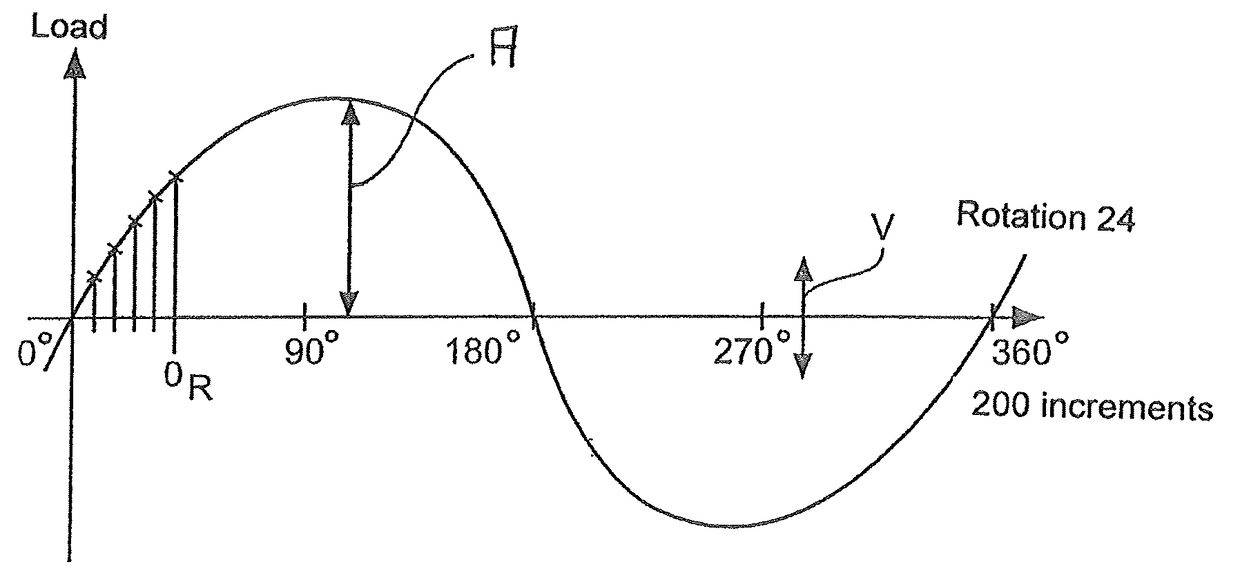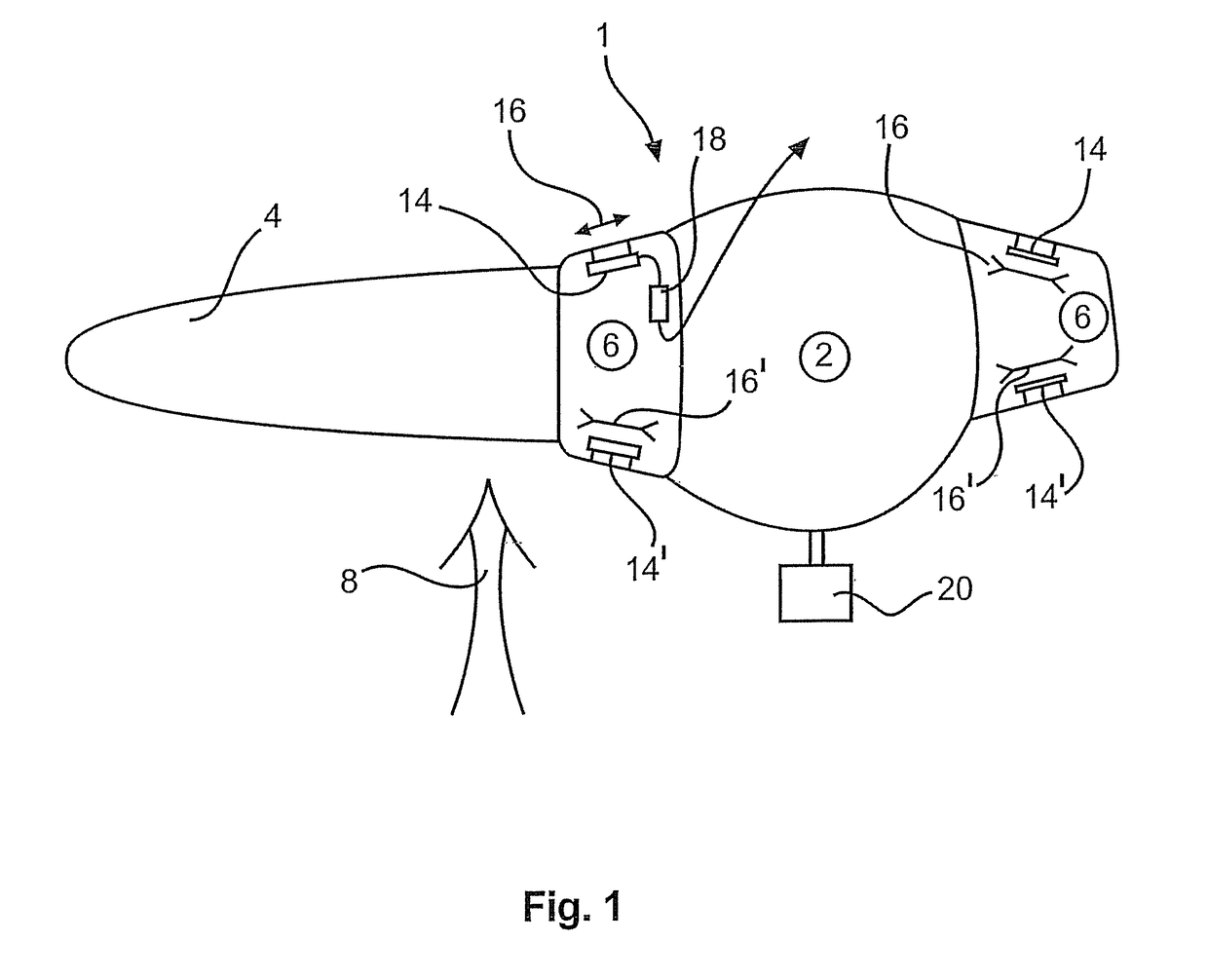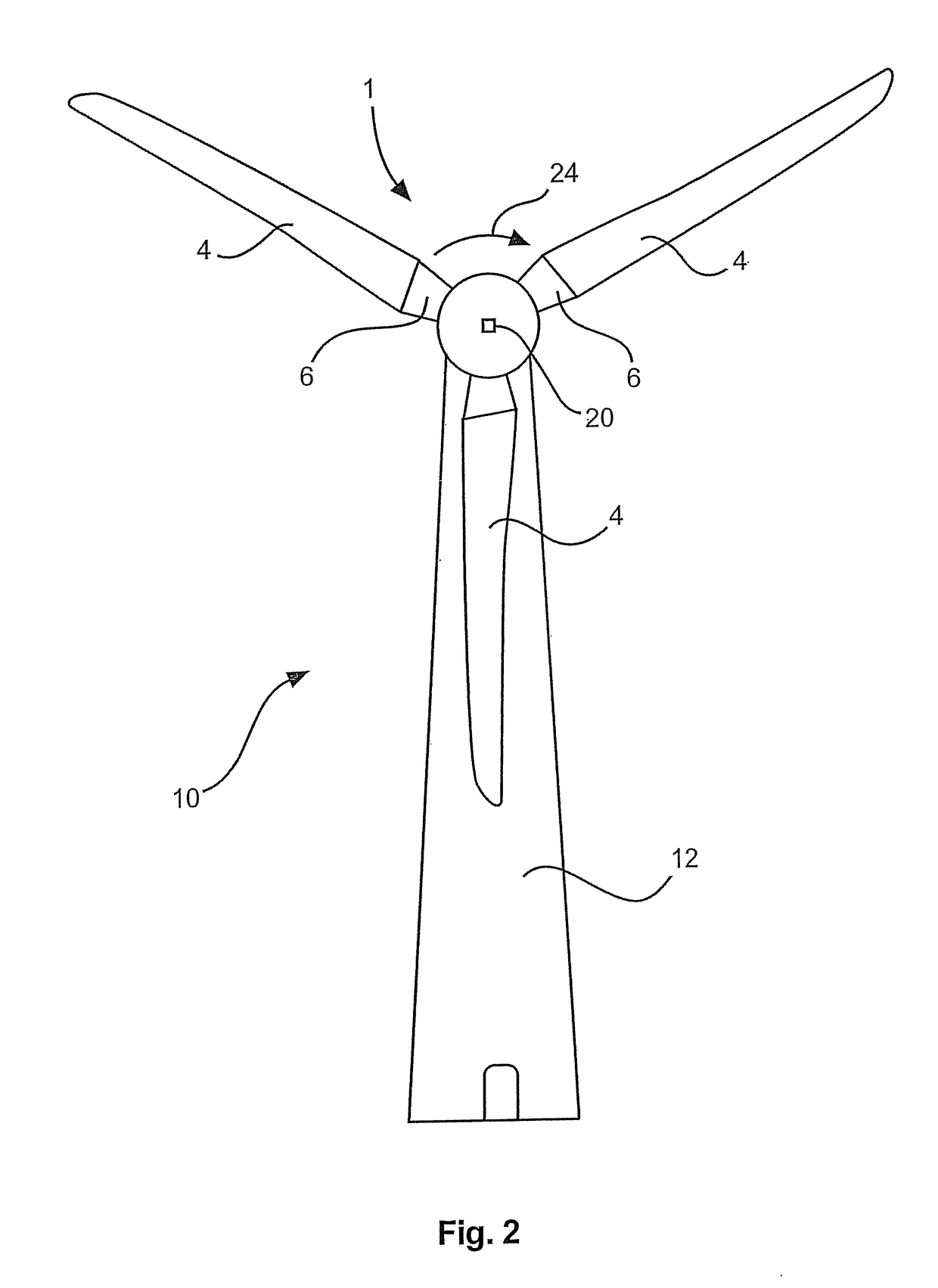Method for operating a wind power plant
a technology for wind power plants and wind power installations, applied in the direction of instruments, machines/engines, mechanical equipment, etc., can solve the problems of wind power installation damage, high cost, prone to error, etc., and achieve the effect of easy calibration and/or adjustment, high degree of accuracy
- Summary
- Abstract
- Description
- Claims
- Application Information
AI Technical Summary
Benefits of technology
Problems solved by technology
Method used
Image
Examples
Embodiment Construction
[0035]The plan view in FIG. 1 shows a portion of a rotor 1 having a hub 2 and a rotor blade 4 out of a total of three rotor blades on the rotor 1. The rotor blade 4 is fixed to the hub by means of a blade adaptor 6. The blade adaptor 6 is fixed rotatably to the hub in order to turn the rotor blade 4 into the wind, out of the wind or into an intermediate position. A wind measuring means 20 for generally measuring the prevailing wind is shown in the region of the hub 2.
[0036]Reference 8 denotes an arrow specifying the direction of the wind which in usual operation acts on the rotor blade. In this case the wind direction corresponds to the direction of the view of a wind power installation as shown in FIG. 2. FIG. 2 diagrammatically shows an overall view of the wind power installation 10 and in that case illustrates the aerodynamic rotor 1 with three rotor blades 4. The wind power installation pylon 12 is also shown.
[0037]FIG. 1 thus shows a plan view of the wind power installation 10 ...
PUM
| Property | Measurement | Unit |
|---|---|---|
| pitch angle | aaaaa | aaaaa |
| pitch angle | aaaaa | aaaaa |
| pitch angle | aaaaa | aaaaa |
Abstract
Description
Claims
Application Information
 Login to View More
Login to View More - R&D
- Intellectual Property
- Life Sciences
- Materials
- Tech Scout
- Unparalleled Data Quality
- Higher Quality Content
- 60% Fewer Hallucinations
Browse by: Latest US Patents, China's latest patents, Technical Efficacy Thesaurus, Application Domain, Technology Topic, Popular Technical Reports.
© 2025 PatSnap. All rights reserved.Legal|Privacy policy|Modern Slavery Act Transparency Statement|Sitemap|About US| Contact US: help@patsnap.com



